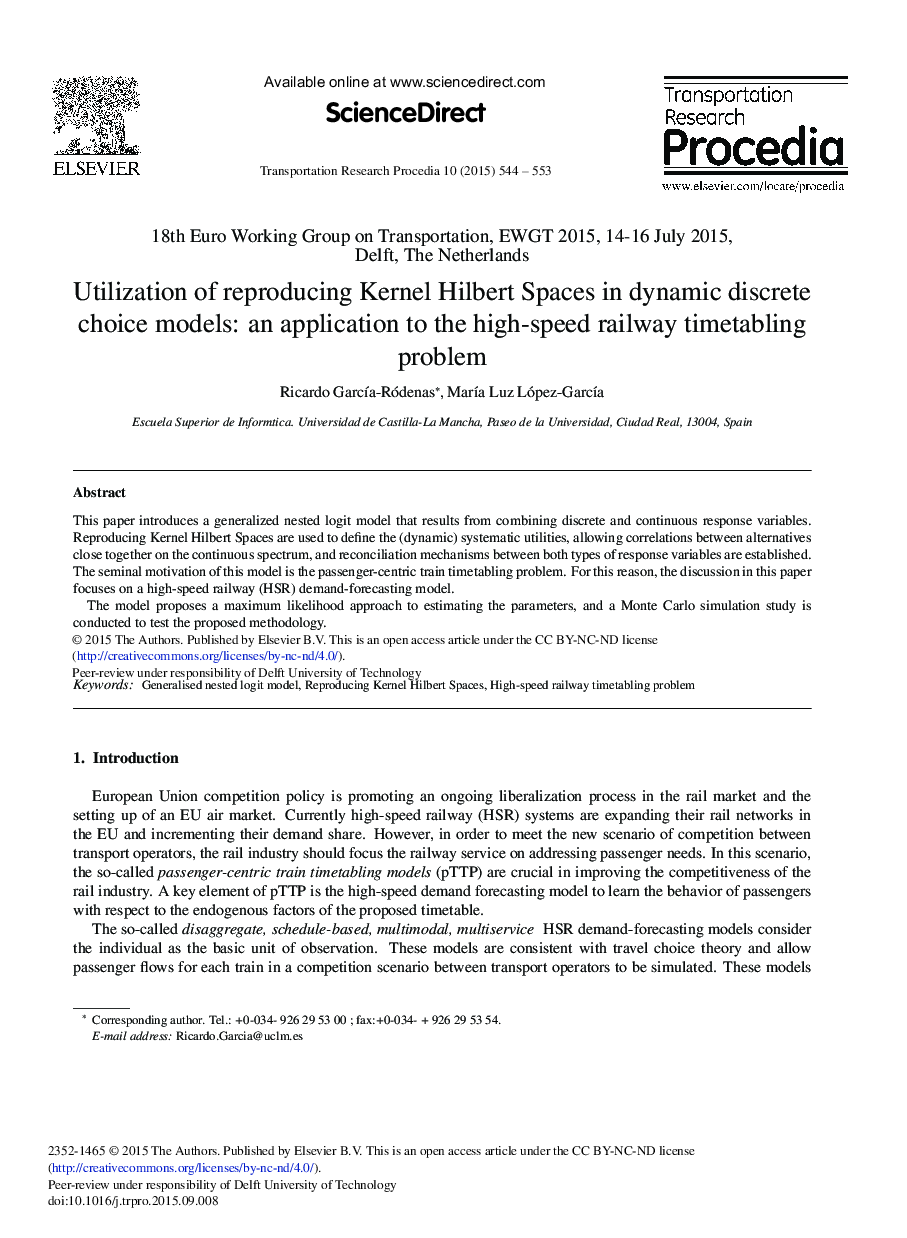| Article ID | Journal | Published Year | Pages | File Type |
|---|---|---|---|---|
| 1106865 | Transportation Research Procedia | 2015 | 10 Pages |
Abstract
This paper introduces a generalized nested logit model that results from combining discrete and continuous response variables. Reproducing Kernel Hilbert Spaces are used to define the (dynamic) systematic utilities, allowing correlations between alternatives close together on the continuous spectrum, and reconciliation mechanisms between both types of response variables are established. The seminal motivation of this model is the passenger-centric train timetabling problem. For this reason, the discussion in this paper focuses on a high-speed railway (HSR) demand-forecasting model.The model proposes a maximum likelihood approach to estimating the parameters, and a Monte Carlo simulation study is conducted to test the proposed methodology.
Related Topics
Social Sciences and Humanities
Social Sciences
Safety Research
